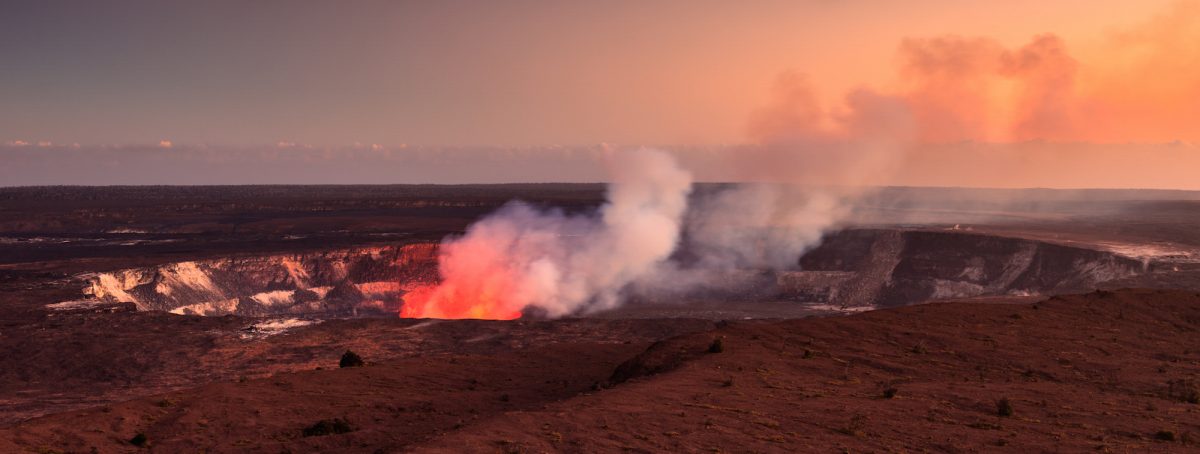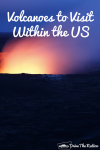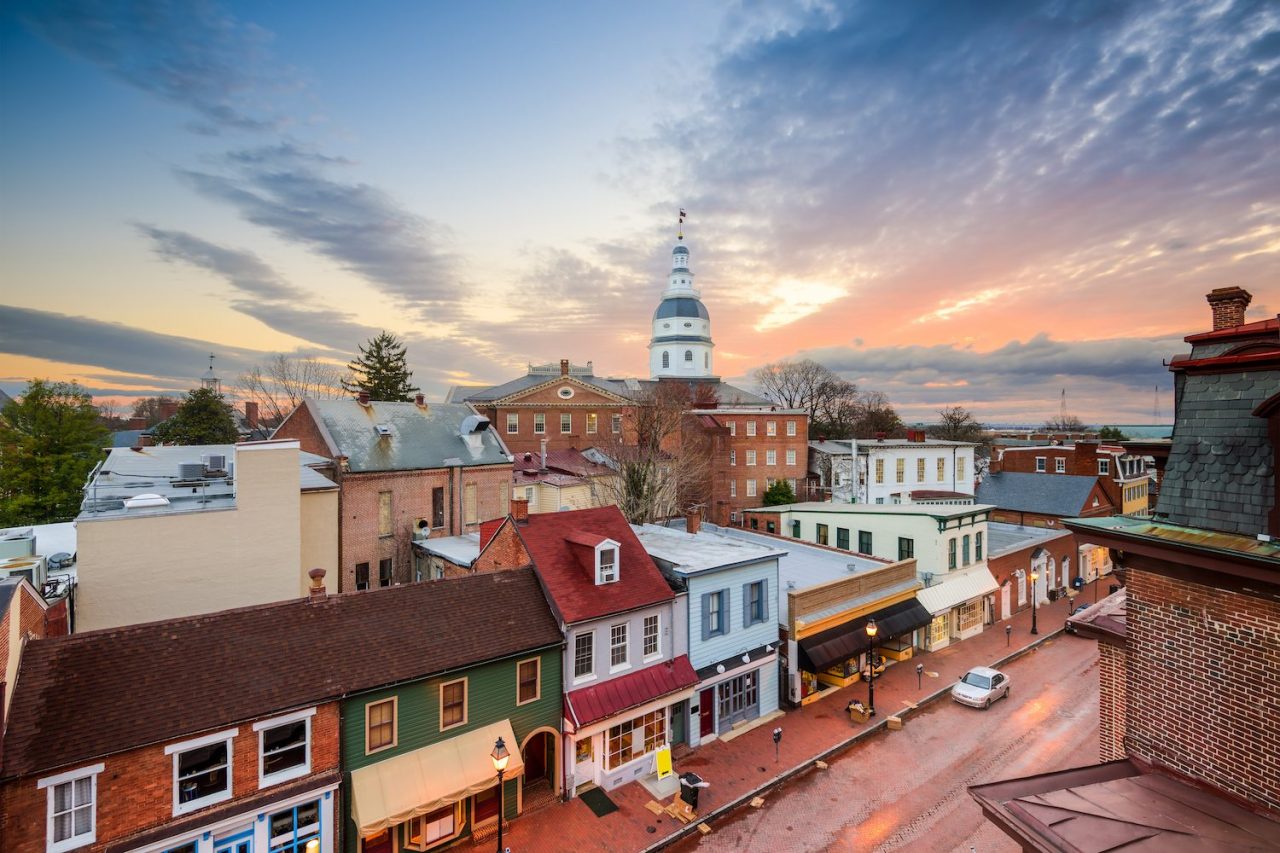For a driving trip that lets you see some of the best volcanoes anywhere, try this “Volcanoes of the Cascades” driving tour. This drive lets you see four volcanoes up close and personal (Mount Rainier, Mount St. Helens, Mount Hood, and Lassen Peak), and offers views of at least three more, at a distance. You will love being in the Pacific Northwest, and seeing these impressive examples of nature’s wonders.
Mount Rainier National Park
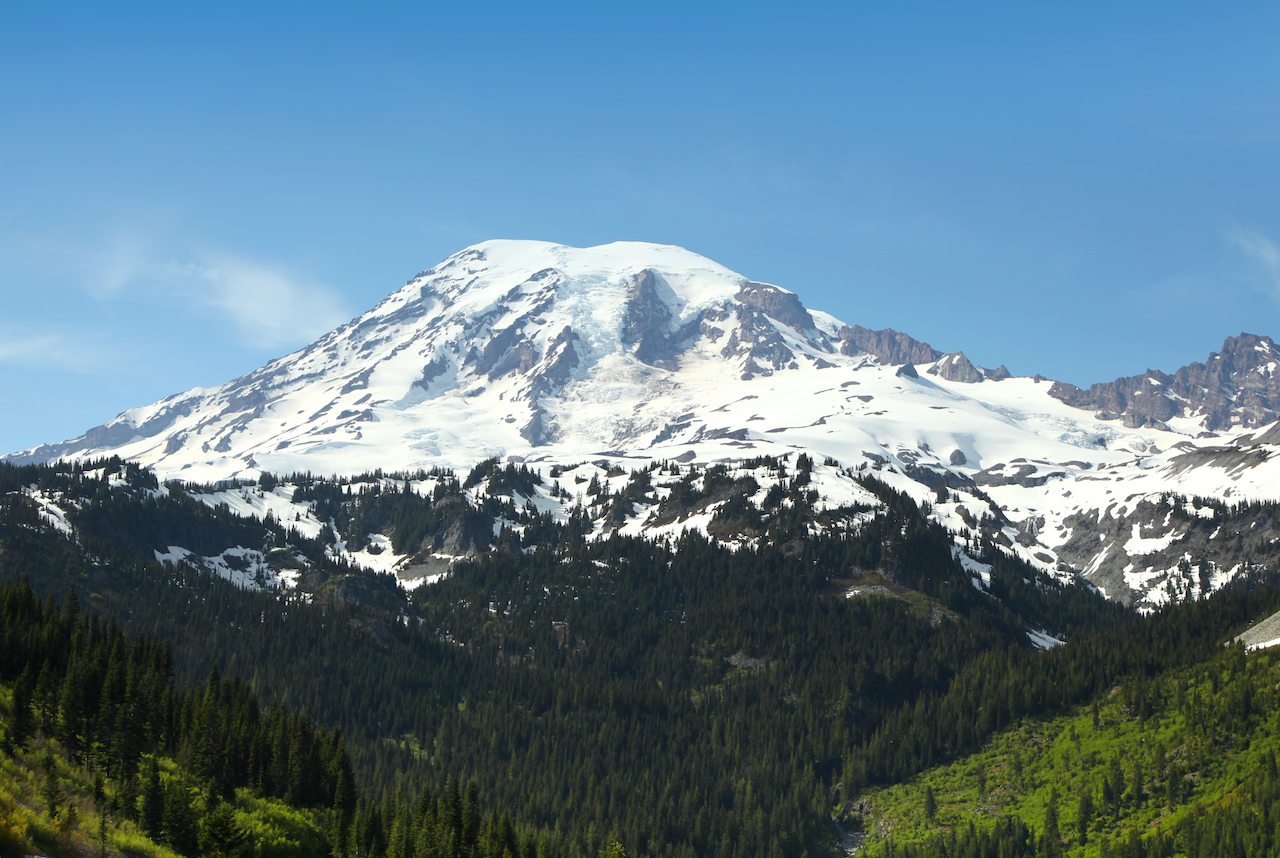
Snow covered Mount Rainier in Washington state in Spring time
Begin in Seattle, and take time to explore this great city if you can. From Seattle, drive by way of routes 167 and 410 to Mount Rainier National Park. At 14,410 feet high, Mount Rainier is the park’s main feature. It is glacier capped. Head for the northeast entrance, and go to Sunrise, elevation 6,400 feet, where you can reach the highest point accessible by car. Those who are there very early in the day will see a gorgeous sunrise on the face of the volcano, hence the name Sunrise. You can also see other nearby volcanoes from there, including Mount Adams. Be sure to stop at the Visitors’ Center, where you can obtain a handout describing the easy, moderate, and strenuous walking trails for views of the volcano, lakes, and the Emmons Glacier. Plan ahead and bring a picnic meal to enjoy in this impressive setting. The Sunrise Road is usually open between late June and early October. If you like historic and rustic, consider a stay at the Paradise Inn, located within the Park, but book ahead and ask for a north or east facing room, for the views.
Mount St. Helens
From Sunrise, drive via routes 410, 123 and 12, to NFD 25, to access Windy Ridge, overlooking beautiful Spirit Lake on the eastern expanse of Mount St. Helens, one of only two volcanoes in the continental USA to erupt in the 20th century, the other being Lassen Peak (see below). From this broad promontory you have a 300 degree view of the scene, which includes evidence of the destruction caused by the cataclysmic 1980 eruption. This portion of your drive gives views of Mount Adams. Because of its remoteness, this viewpoint is seldom crowded, affording you a relaxed and inspiring visit.
Ape Cave Lava Tube
From Windy Ridge overlook, follow NF 99, NFD 25, Hwy 90, NF 83 and NF 8303, as you circle Mount St Helens, to Ape Cave Lava Tube. It is the longest uninterrupted lava tube in the continental USA, at two and a half miles long. Ape Cave is a popular hiking destination with beautiful views of the Mount St. Helens debris flow region. National Recreation Trail “Ape Cave Trail No. 239” follows the inside of the cave, and has 170,000 annual visitors. Even on a hot summer day, it is about 42 degrees in the cave, so bring a jacket or sweatshirt. The ground is uneven, so hiking boots are recommended. You will also need a headlight, to see your way.
The Trail of Two Forests
From there it is just a twenty minute drive along NF 8303 to The Trail of Two Forests interpretive site, where a boardwalk hike takes you through a ghost forest left behind in the wake of a volcanic eruption over 1,900 years ago, as well as the forest of today, thus the “Two Forests” name. This accessible boardwalk loop trail provides close up views of ancient tree casts that were made when lava flowed around trees and then cooled. The quarter-mile loop, also offers an optional crawl through a narrow fifty foot lava tube, which kids of all ages enjoy. Except for the optional tube crawl, this level boardwalk stroll is wheel-chair friendly.
Johnson Ridge
To have the most spectacular view of Mount St Helens, follow route 504 to Johnson Ridge, and the Visitor Center, overlook and amphitheater. This location is also best for learning about the 1980 eruption of Mount St. Helens. A walking trail leads to impressive views of the volcano and the landscape around it. A half hour helicopter ride around the crater may be booked from here. Be aware that Johnson Ridge is the most-visited feature of Mount St. Helens.
Mount Hood
Then travel south to Portland, Oregon. From Portland take Route 26 to Timberline Lodge, which offers walking trails or chairlifts from which to view the south side of Mount Hood with its glaciers. Known as “Wy’east” by the Multnomah tribe, Mount Hood is a potentially active stratovolcano. You can walk up to the ski lift and buy a ticket to the mid-way point, where you can enjoy the sights at 7000 feet. While in the area, consider a stop and a hike at Mirror Lake trailhead, in order to take the quintessential photo of the volcano reflected in the lake. It is a relaxing hike up to Mirror Lake.
Newberry National Volcanic Monument
For a volcanic side trip, as you head south from Mount Hood to Lassen Volcanic National Park, consider a visit to Newberry National Volcanic Monument, with its Lava River Cave. The cave hike is a mile long, then you turn around and return, for what is a total of two miles. As in most caves, it is dark, rocky, damp, slippery, and filled with steps, so bring a flashlight, wear shoes with treads, bring a jacket and use good judgment about who will make the climb.
Lassen Volcanic National Park
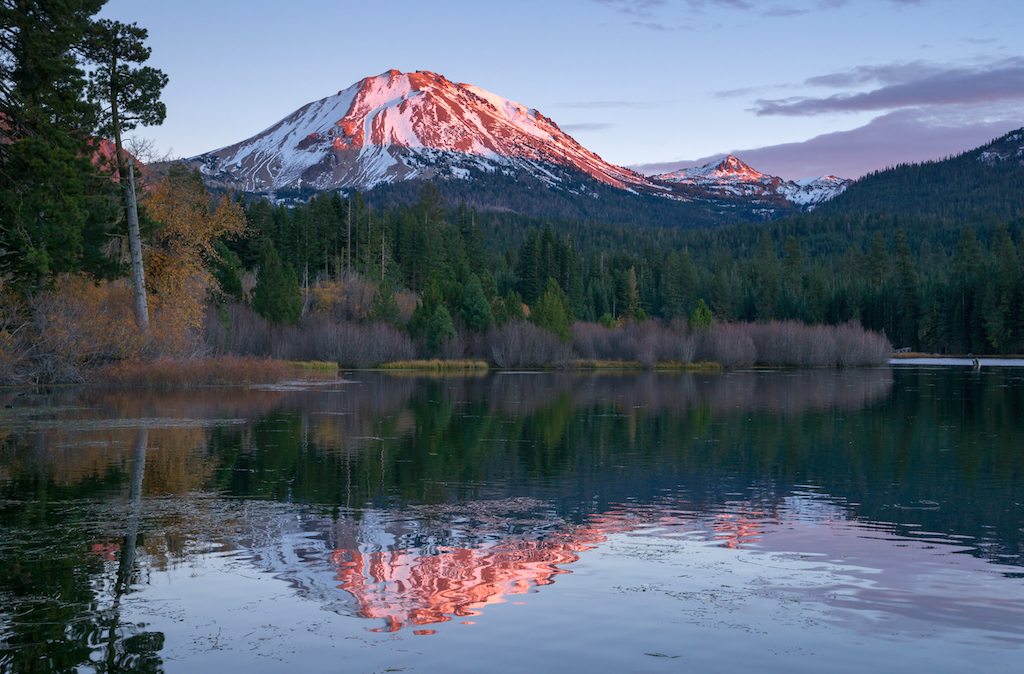
Lassen Peak reflects the Suns color at sunset
Or travel directly from Mount Hood, head south via routes 27, 97, 39, 139, and 44, to Lassen Volcanic National Park. Lassen Peak last erupted, dramatically on May 22, 1915. You can see the splendor and power of that event as you view this, the biggest plug dome volcano in the world. It is also the most southern of the volcanoes in the Cascade Range. Begin your visit at the Visitor Center; see the film about the volcanic eruption, and the displays. Then drive the park, stopping at the marked areas along the way offering historical information about the last eruption. Let your car do all the work; just drive through the park, pulling over to enjoy the views as you wish. Hint: find a viewing point at Lake Helen or Manzanita Lake, and wait for the sunset on Lassen Peak for great photos.
Looking for other great volcanoes to visit? Plan a trip to see Alaska’s Mt Redoubt and Shishaldin. Or venture across the Pacific to visit Kilauea in Hawaii.

